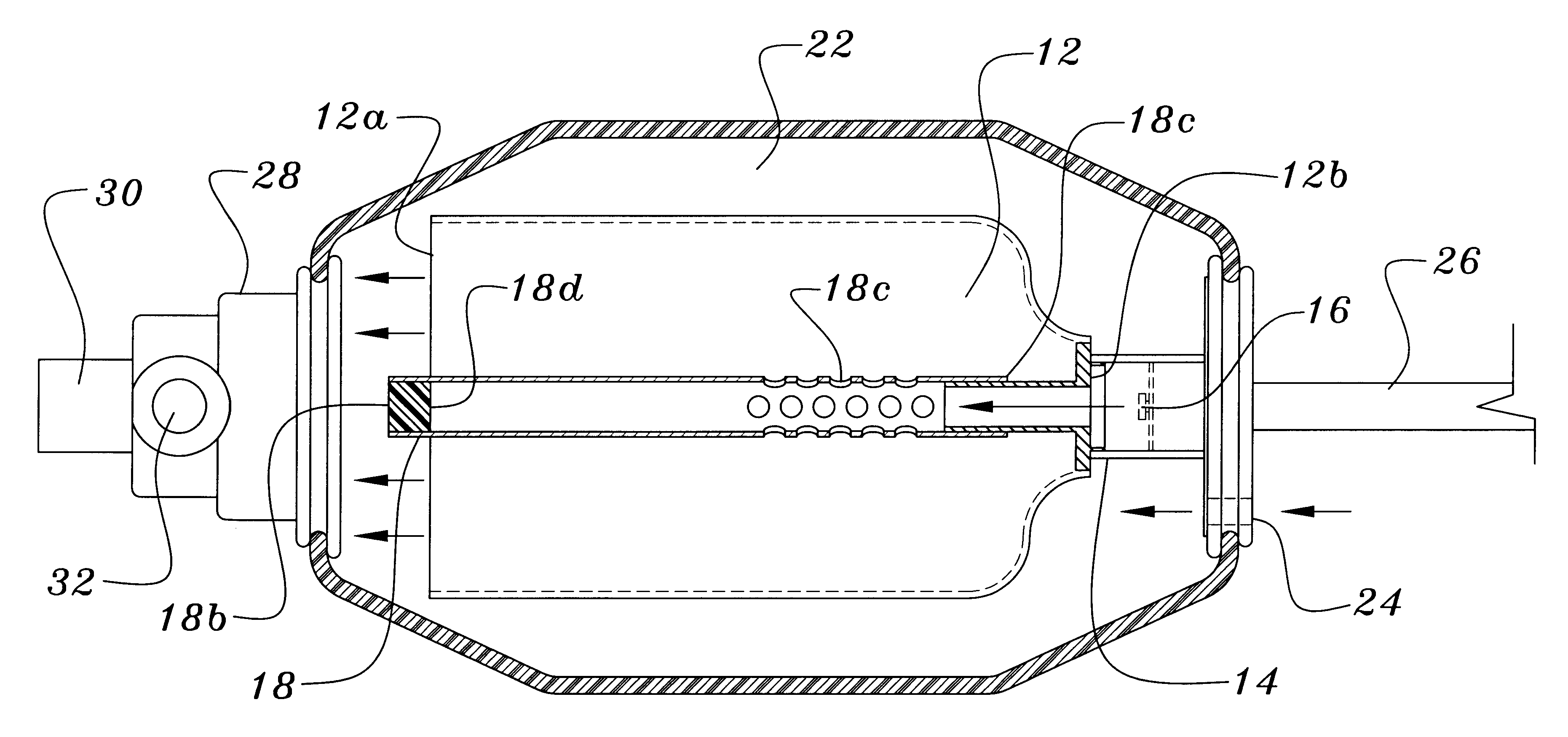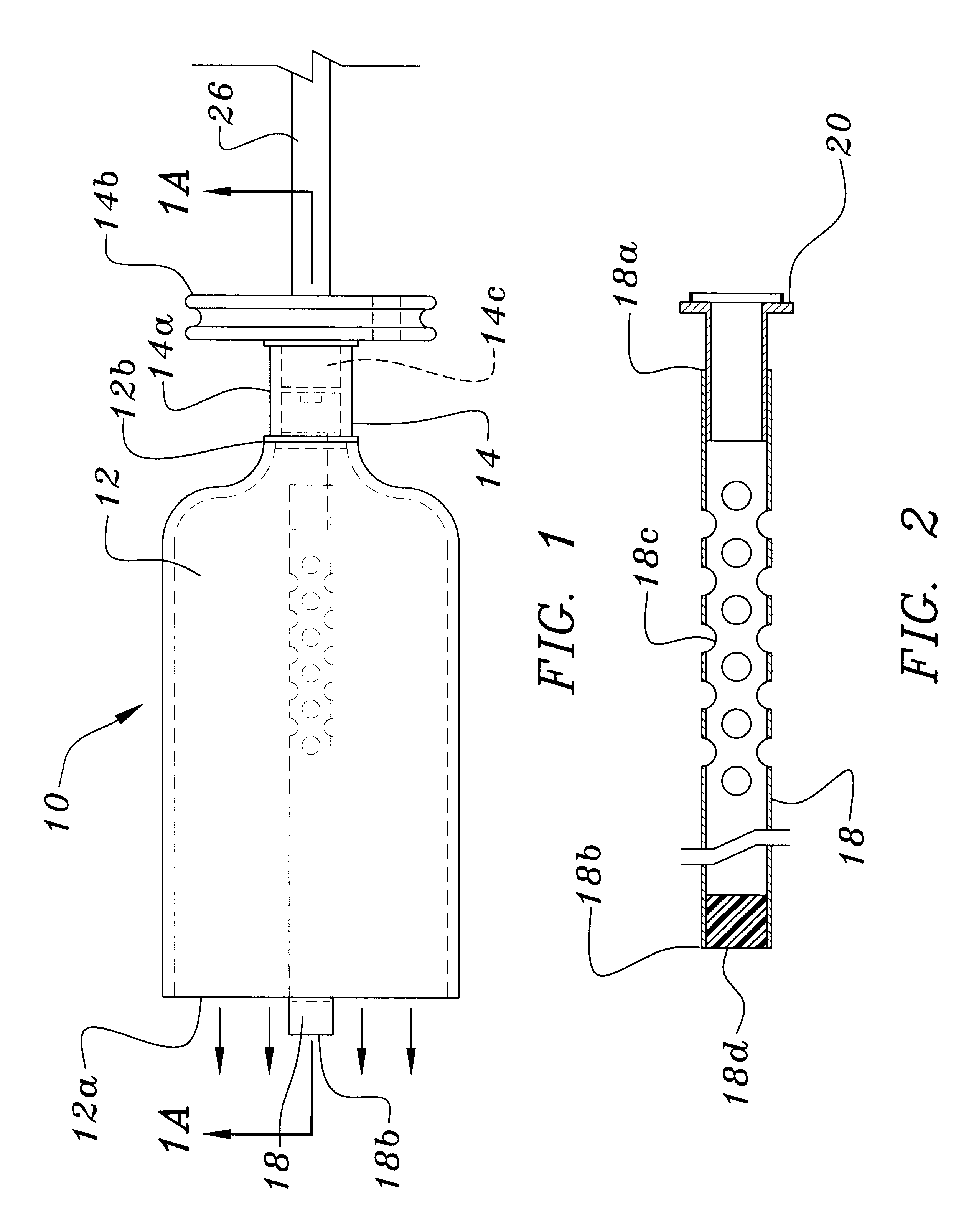Gas concentrator
a concentrator and gas technology, applied in the direction of respirators, etc., can solve the problems of not being able to administer substantially pure oxygen to patients under certain relatively frequently occurring high oxygen conditions, the advent of the oxygen accumulator squeeze bag resuscitation device did not satisfy the need for substantially pure oxygen to patients under certain relatively frequent high oxygen conditions, and the system is incapable of dispensing pressurized atmospheric air. , to achieve the effect of reducing manufacturing costs, improving oxygen/gas concentration, and simple tool
- Summary
- Abstract
- Description
- Claims
- Application Information
AI Technical Summary
Benefits of technology
Problems solved by technology
Method used
Image
Examples
Embodiment Construction
The devices described herein can be disposable or permanent types dependent on the intended application. Permanent or reusable devices are typically manufactured to be easily dismantled for cleaning and sterilization. Disposable units are generally only used once and in some instances used on more than one occasion.
As shown in FIG. 1, gas concentrator 10 consists of a reservoir 12, which includes a first opening 12a and a second opening 12b. Manifold 14 includes a first part 14a and a second part 14b. First part 14a contains a passageway 14c to accommodate a gaseous flow. As shown in FIG. 3, first part 14a will include a check valve 16 within passageway 14c to control the flow of gas through passageway 14c. In a preferred embodiment, check valve 16 will be a two-state valve. When the pressure within reservoir 12 is lower than atmospheric pressure, check valve 16 allows gas to flow towards reservoir 12. When the pressure within reservoir reaches or exceeds atmospheric pressure, check...
PUM
 Login to View More
Login to View More Abstract
Description
Claims
Application Information
 Login to View More
Login to View More - R&D
- Intellectual Property
- Life Sciences
- Materials
- Tech Scout
- Unparalleled Data Quality
- Higher Quality Content
- 60% Fewer Hallucinations
Browse by: Latest US Patents, China's latest patents, Technical Efficacy Thesaurus, Application Domain, Technology Topic, Popular Technical Reports.
© 2025 PatSnap. All rights reserved.Legal|Privacy policy|Modern Slavery Act Transparency Statement|Sitemap|About US| Contact US: help@patsnap.com



